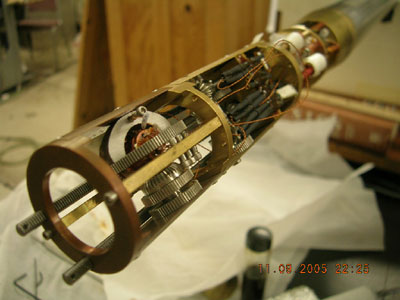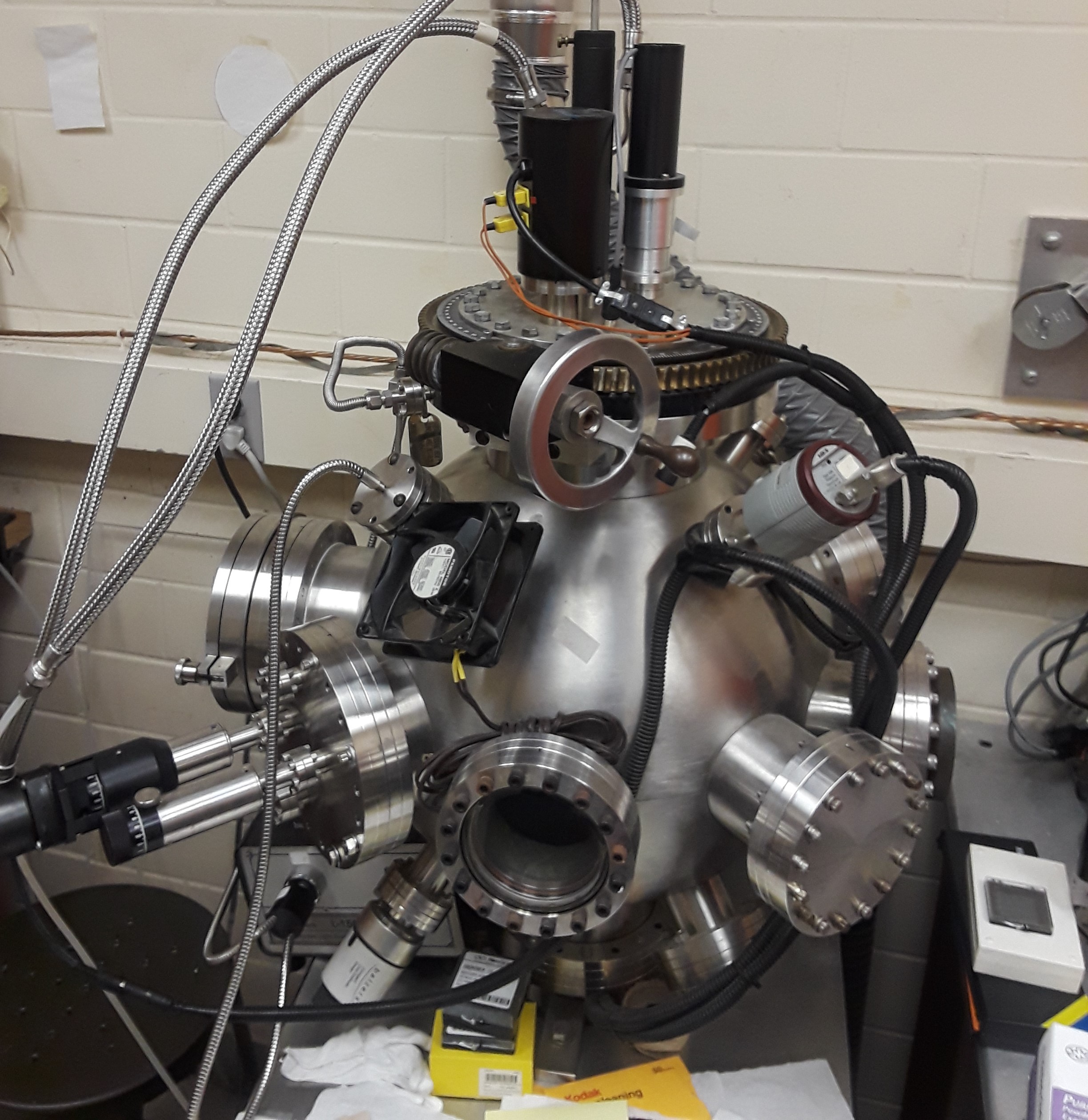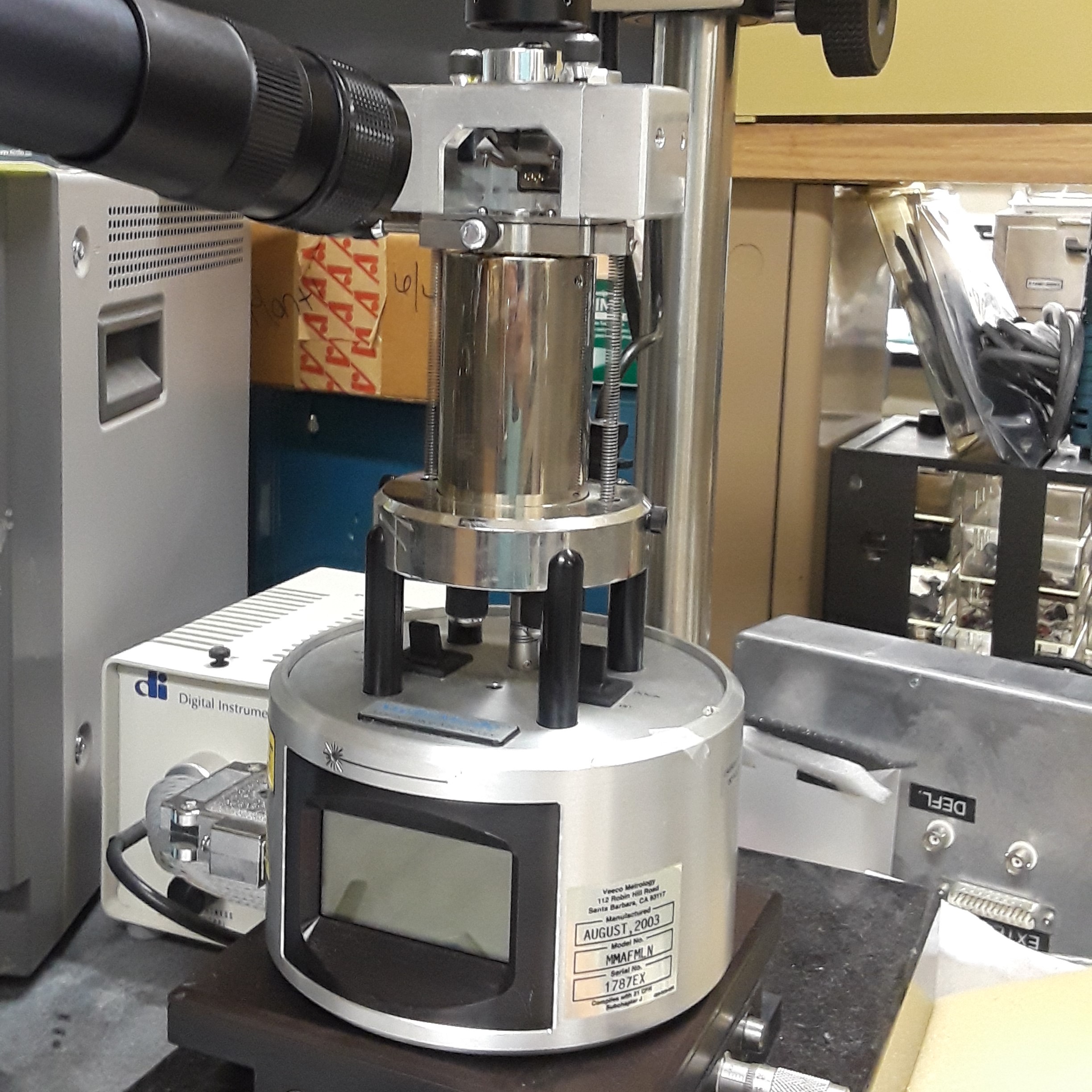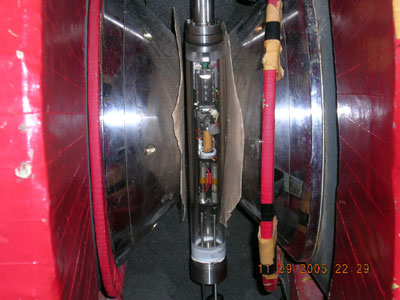
Nuclear Magnetic Resonance Microscopy and Spectroscopy
- Conventional nuclear magnetic resonance (NMR) spectroscopy to study spin dynamics
- One of the few groups worldwide to be pioneering the new technique of NMR force microscopy (NMRFM). Where one couples the nuclear moments of a sample to micro-oscillators and detects motion with fiber-optic interferometry
- Applied to study physics of:
- Polymer films
- Metal hydride films
- Individual cell microscopy
- NMR of microcrystals
- Ultimate goal is for single nuclear spin detection
- Applications in molecular biology, quantum computation, and subsurface characterization
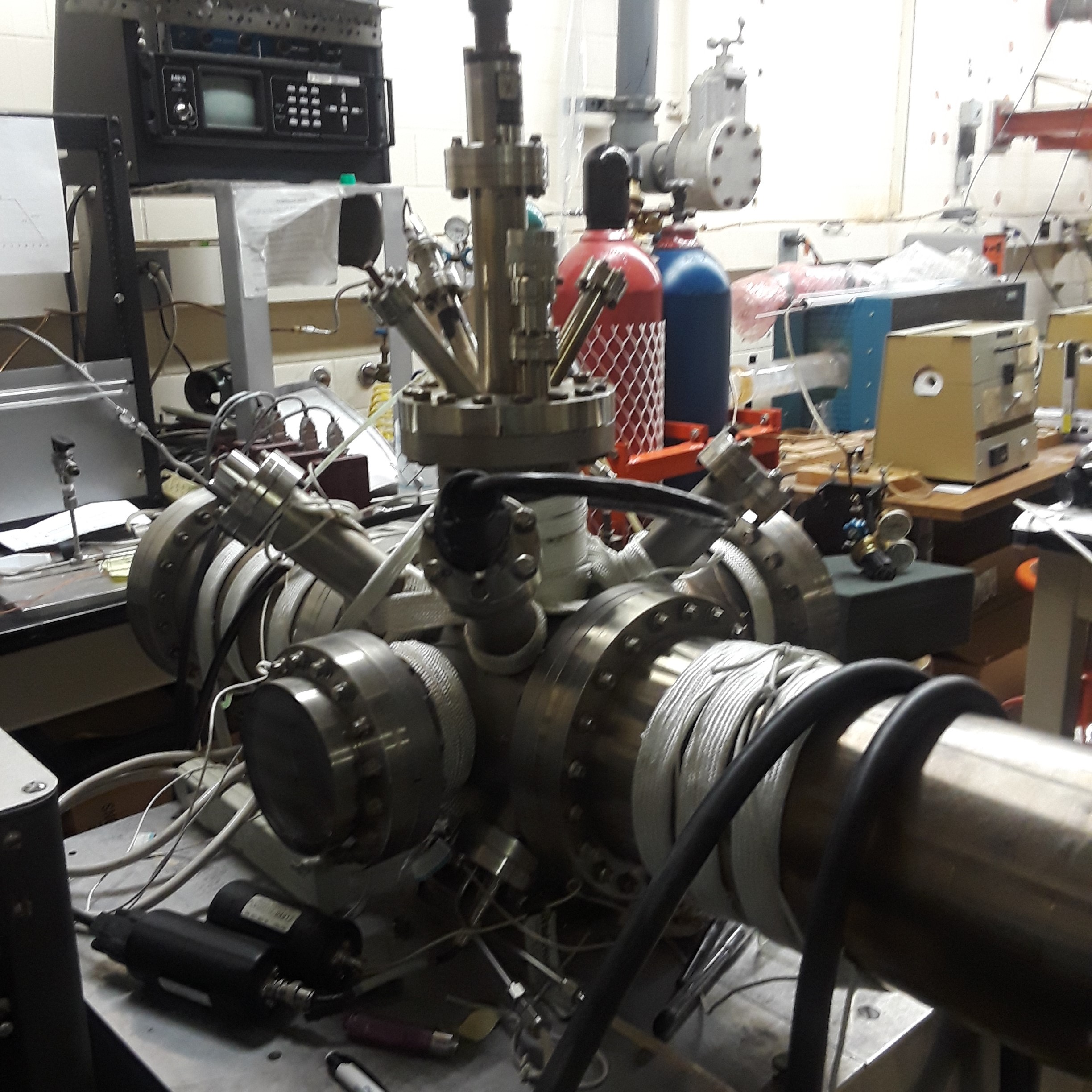
Dynamics of Ferromagnets
- Electron-beam evaporation of thin magnetic films, magnetic dots, and multilayers onto oscillators
- Domain wall motion: study of interface depinning, hysteresis, reproductibity, and criticality (self-organized or otherwise)
- Study of effects of interface topography and reduced dimensionality on ultrathin film and multilayer magnetism
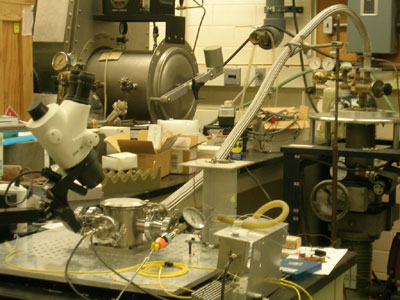
High-Q Oscillator Experiment
Probe fundamental phenomena at force sensitivities of 3x10-18 N at 0.3 K and displacements of 10-4 nm. For example:
- Direct measurement of transverse forces on moving vortices (the Magnus effect)
- "Intrinsic" pinning of magnetic vortices due to spatial variations of the superconducting order parameter

